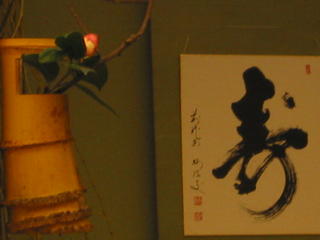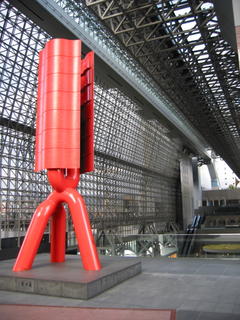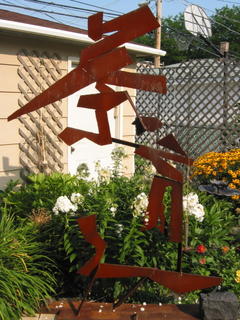
Words come in many guises. They exist in a multitude of divergent images. Ancient cuneiform clay tablets and pixilated computer screens compete for our attention. But I am not concerned with grammar or meaning, more with symbols.
Oriental script is distilled pictographs, fractionated images from life. The first inkling of words I imagine as cave drawings that quickly became stylized. Our ancestor’s images and thus their thoughts are apparent. Images of their hands, the animal they hunt, their weapons and the gods they worship repeatedly appear. But when it comes to kanji, the Chinese alphabet, I find any attempt to casually decipher the characters futile.
I have recently tried to understand the different genre of Japanese script. Many years ago a friend, who spent half of the 80's teaching English in Japan and Korea and in the process became fluent in both languages, took an ad from a Japanese magazine and dissected it for me.
The complexity of the ad overwhelms me: hiragana, katakana, kanji and English are all combined to produce a visually stunning ad. We use many fonts in English, but a common script, whereas in Japan you are dealing with multiple alphabets.
While attending Southern Illinois University in the 1970's I became friends with a young women from Oman. She was working on a second master’s degree, this time in mathematics, trying to stave off an inevitable arranged marriage to her cousin.
In describing her path to SIU she related the political Diaspora her family traveled as they moved from Madagascar to India, finally settling in Oman. During her journey she learned French, English, Arabic and a smattering of other languages. I was very envious of her linguistic skills till one day she confided in me her difficulties forming thoughts.
I could not image why, she was very articulate. But to her, the lack of mastery of any one language confused her thoughts. She did not know what language to think in. Each language presented her with a different worldview.
Thoughts are made up of vocabulary, a lexicon of words and symbols. Which brings me back to cave drawings. How different our worldview would be if our alphabet were one of images as opposed to a series of straight and curved lines. It is the difference between Descartes and Gautama Buddha, between symphonic form and the ragas of India.
Perception within the same language is dicey; think of the bible or the constitution. Interpretations are constantly in flux. Now imagine transferring information between the east and the west. Many of us have experienced the translation of one kanji that can continue on for minutes to hours.
I regret my lack of language skills. I do not know if it is laziness or a lack of IQ, but I seem doomed to experiencing a culture without the ultimate inclusion of words. It separates me from the culture, but I try not to concern myself with this perceived deficit. The aphorism, one meeting/one time, behooves me to make the best of every moment. Life happens once, second by second. I do my best my best with the knowledge and skills I have and get on with the art of living.
We see, interpret and describe, reforming words as need be. Words are used to delve into the minds of the great apes. Once we have a common alphabet, composed of both words and images, it opens up their world to ours or maybe visa-versa. The popular press was shocked at how much humans and the great apes have in common. This use of words forced a reevaluation of the ethics involved with our interaction with these animals.
In a way, our Western language is once removed from the objects we describe. I think of the structure of DNA and wonder if the image of a double helix was known to the ancient Chinese what the kanji would look like. By the time we have a word we are several steps remove from the actual object. Somehow kanji seem more direct and thus contain more information, information that leads to speculation, interpretation and thought.
I will always cherish the memory of the pondering I naively initiated between Rev. and Minnie Kubose (my tea teacher) by simply asking what the scroll hanging in the tokonoma meant. The unintended consequence of which was I got to rest my knees for the twenty or so minutes it took to come to the conclusion that it would take another hour to really do justice to the topic.
So what is my point, for once I am not sure. I think I will just end with 言 (gen).











